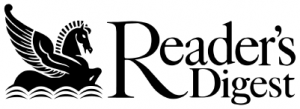 “Life well shared” is the tagline for Reader’s Digest. The publication began in 1922 and was, until 2009, the #1 best-selling magazine in the U.S. (losing its position to Better Homes and Gardens). How does a magazine that’s over eight decades old stay relevant? More digital offerings appeared in 2010. And, in 2011, Reader’s Digest is collaborating with one of the most well-used and -respected online health social networks, OrganizedWisdom (OW).
“Life well shared” is the tagline for Reader’s Digest. The publication began in 1922 and was, until 2009, the #1 best-selling magazine in the U.S. (losing its position to Better Homes and Gardens). How does a magazine that’s over eight decades old stay relevant? More digital offerings appeared in 2010. And, in 2011, Reader’s Digest is collaborating with one of the most well-used and -respected online health social networks, OrganizedWisdom (OW).
How did this collaboration come to be? I spent some quality time in February 2011 with Unity Stoakes, co-founder of OW with Steven Krein, in New York City, the geographic HQ of OW. Here is a snippet of our discussion…
Jane: How did OrganizedWisdom come to link up with Reader’s Digest?
Unity: When we set out to find the perfect partner to help close what we call the ‘Online Health Gap’, Reader’s Digest was the first brand we thought of because of the trust and respect they garner with both doctors and consumers. They have enormous reach into over 300,000 doctor waiting rooms and are beloved by millions who trust their brand. The timing was perfect because as we were looking for a partner to bring our digital content to the offline world, Reader’s Digest was in the middle of working on a number of new digitally-driven products and very focused on innovation. We both realized we could partner to help reach more people and serve as a bridge between the offline and online world by immediately working together. We’re so excited because by partnering with trusted content curators like Reader’s Digest, we can do our part in helping elevate the standard of care by guiding millions of people to discover trusted health information contributed by experts.
Jane: What’s the vision for the project?
Unity: We envision a world where people are guided online and off, by the helpful hand of experts. The Reader’s Digest relationship is significant because it enables OrganizedWisdom to bridge the online and offline world. It gives us a direct link with over 300,000 doctors and a connection with the patients in their waiting rooms so we can deliver them “information prescriptions” that they will then be able to use to go online and research specific health topics with confidence that a trusted expert is guiding them.
Jane: You’re focusing on 5 conditions/health issues first. Why did you select these to tackle for your launch together?
Unity: There are certain health conditions that affect a wide swath of the American public today such as obesity, diabetes, heart disease, high cholesterol for example. Our goal is to reach as many people as possible so we are going after the issues that doctors are helping many of their patients with everyday. We believe that by focusing on these issues first, we can actually help doctors save enormous amounts of time during a doctor visit because they will be able to give their patients immediate guidance on where to go online for all of the frequently asked questions that arise for these topics. They will then be able to dig in and use their face to face time to answer other questions they may otherwise not have time for.
Jane: Why doctors’ offices?
Unity: We believe that by connecting directly with doctors and inspiring them to embrace digital media we can help close what we call the “Online Health Gap”, the scary space that exists between a doctor visit and the Internet, where people are left alone with an empty search box and millions of computer-generated results. We’re in a post-algorithmic world where people need more guidance than a machine-alone can provide; but with doctors already constrained by limited time and being stretched thin new solutions are needed to help collect, archive, and organize their wisdom for patients online. We believe that there is a huge opportunity to help people by giving the doctors the platform to deliver the right information to people specifically relevant to them when they need it.
Health Populi’s Hot Points: OrganizedWisdom has learned a lot since its inception, and a key learning has been the currency of trust in health care. With Reader’s Digest, a publication that virtually every patient who’s ever waited in a doctor’s office has seen, OW gets offline access to a audience segments that may not know them from the online world. By focusing on several major conditions in this first phase, the alliance will be able to reach huge numbers of people to provide helpful, trustworthy information, and will drive further traffic to the online portal.
Soon, OW will be rolling out a newly engineered website. The initial platform they’re creating will be for doctors, health experts and advocates to help them easily collect, manage and organize their online contributions and distribute it to those who need it. While OW has successfully connected people to trustworthy, expertly-curated health information for several years, this Renaissance represents OW v2.0.
That’s all I can say for now, but watch for OrganizedWisdom to bring a whole new level of innovation to the online health world in 2011 to help further close the Online Health Gap.




 Thank you FeedSpot for
Thank you FeedSpot for